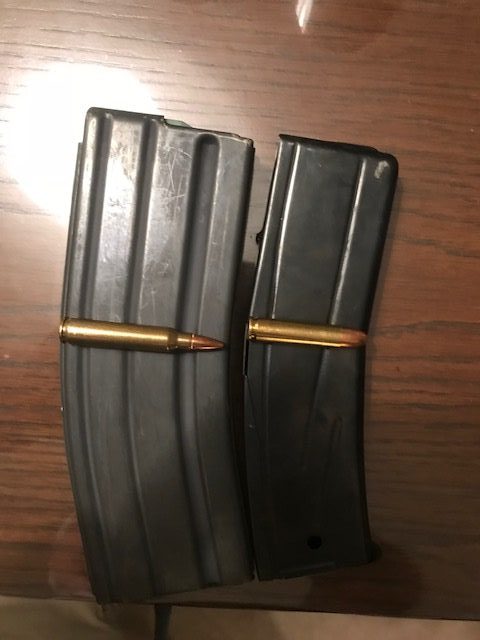Protection and Preparation
Consultants Weigh In On Preparing For Campus Tragedy
April 23, 2018
School shootings are no longer a problem but an epidemic. The United States of America has been averaging one a week thus far in 2018, and over the past decade the number of mass shootings is nearly equal to of every country in the world combined.
The topic of gun control has created a divide among citizens in the U.S. for years now, but in light of the recent mass shootings, the divide is more apparent than ever.
On one side, some individuals are activists for stricter gun laws, and advocates for the notion that less gun access means less violence.
And on the other side, some individuals want their Second Amendment right to bear arms protected and feel armed personnel in schools not only makes sense, but it is common sense.
Opposing views on gun control reform, specifically regulation for assault weapons, has sparked political debates, social movements, and rallies across the nation. Students are standing and walking out. Adults are arguing with them at rallies and social media platforms.
Since these battles continue to be waged, the United States had 346 mass shootings in 2017, according to the Gun Violence Archive, and as of press time, has seen 49 incidents in 2018.
***
A shooting at Marjory Stoneman Douglas High School in Parkland, Fla. left 17 dead and over a dozen injured on Feb. 14.
The gunman, 19-year-old Nikolas Cruz, is a former Stoneman Douglas High School student who was expelled for disciplinary reasons, according to statements from local authorities.
Cruz allegedly pulled the fire alarm, causing the students to empty out into the hallways where he proceeded to open fire.
He was armed with an AR-15 assault style rifle, which he obtained legally over a year ago. Under federal law, individuals 18 years of age or older are allowed to purchase long guns. And while Cruz had no prior criminal record, he passed the FBI’s background check.
A Broward County grand jury indicted Cruz on 17 counts of premeditated murder in the first degree and 17 counts of attempted murder in the first degree. Prosecutors are seeking the death penalty, according to a letter of intent provided from the state of Fla.
Parkland Survivors and their allies have been turning their grief into activism over the past month or so since the school shooting.
On March 14, exactly a month after the shooting, there was a nationwide walk-out at 10 a.m. that schools and campuses across the country participated in. With the help of the Women’s March youth branch, EMPOWER, this 17-minute long walk out was orchestrated to honor those that lost their lives and to protest gun violence, according to the organization.
And on March 24, children and adults took to the streets for March For Our Lives, in an attempt to put pressure on Congress to pass gun reform and make schools safer. There were marches in many cities around the world, including major cities like D.C., NYC, Miami and L.A.
A full list of participating cities can be found on their website.
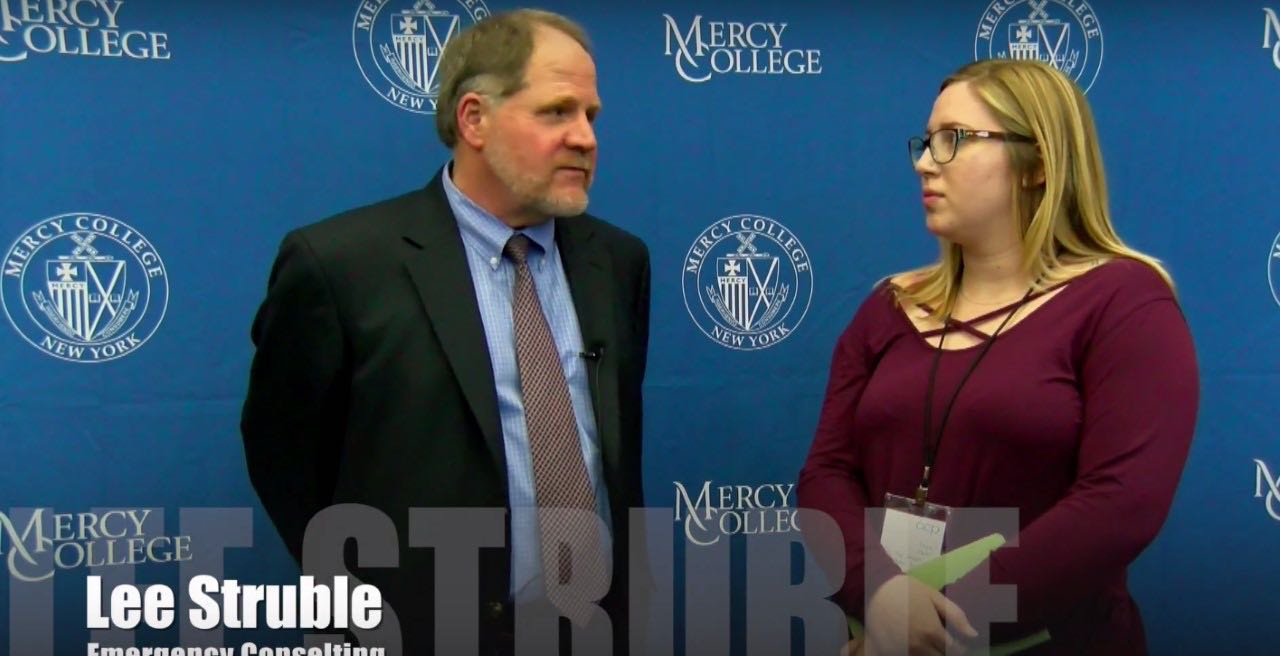
Run, Hide, Fight
“I can’t believe we’re doing this,” a staff member mumbled. “Who thought it would get to a point where I would have to learn how to defend my kids from a shooter?”
Anxious whispers filled Mercy College’s Rotunda while the students and staff waited for the presentation to begin. Lee Struble, an emergency consultant and president of WSM Trainers and Consultants, stood in front of the Mercy community to discuss active shooter and threat training on Feb. 28.
“Each new event that occurs defines us, challenges us, and provides us with a new opportunity to educate,” described Struble.
It is time to adapt the ‘Run, Hide, Fight’ model that is traditionally taught when discussing an active shooter threat, according to Struble.
“We need to take lessons [learned from other incidents] and apply them to that method,” he added.
In the event of an active shooter threat, everyone’s number one priority is to get out and find somewhere safe.
“You’re responsible for your own safety, and then once you’re ready, you help others,” Struble said. “Make sure to use your instincts.”
One of the several scenarios that Struble reviewed was an event in which someone is trapped in the same vicinity with the shooter, and while there’s no definite answer, he provided some possible outcomes.
Some of his suggestions included staying still to give the appearance that you are dead, running for the exit in a zigzagging pattern to confuse the shooter, or even attacking the shooter.
He highlighted that an individual who is faced with an active shooter threat or emergency situation may experience hyperventilation, an accelerated heart rate, loss of peripheral vision, and diminished hearing.
“You need to imagine the unimaginable,” he mentioned. “Because that’s where we’re at.”
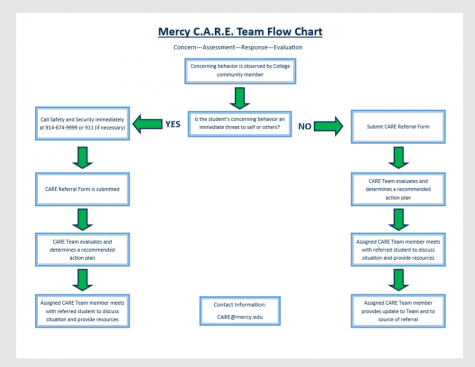
He touched upon various incidents that have happened across the country, including the incidents at Columbine High School in Colorado in 1999 and at Sandy Hook Elementary School in Connecticut in 2012.
Struble also talked about one of the most recent incidents, the shooting at Parkland. He described how the shooter pulled the fire alarm to get the faculty and staff to evacuate the classrooms.
“That fire alarm was a drill we were taught, but we weren’t taught what to do if it was a trap,” said Struble.
He emphasized the concept of “reverse evacuation” where individuals are trained to see danger, instead of putting themselves in a situation where they run into the threat.
“Developing a strategic and survival mindset is important,” he mentioned. “When you go back to your room, think about what might happen, and then think about what you would do.”
Jane King, a Mercy College PACT Mentor, attended the seminar to educate herself, but also to learn about what kind of steps Mercy is taking towards a safer campus.
“In light of Parkland, I want to be prepared for the reality of this,” said King. “At this point, sometimes I feel that it’s not if it will happen, but when.”
—
“Everyone knows that quote, ‘One small step for man, one giant leap for mankind,’ but no one knows the entire quote,” Struble explained.
“The ending goes, ‘it was just like we planned it. It was just like a drill.”
One of Struble’s priorities, besides educating the college community, is creating an emergency plan for Mercy College which will include threat assessment, routine drills, and instilling an immediate notification system.
“It is important to interact with your students,” Struble expressed. “Get to know them and talk about their home life.”
He emphasized that the decline in student and professor relationships is the first thing that needs to change regarding the threat assessment. And while there is no profile of an active shooter, there are signs that both students and faculty should be aware of.
There is a four-pronged assessment approach that Struble deems effective. Prong one is assessing the personality of the student. Prong two is assessing their family dynamics. Prong three includes assessing the student’s school dynamics, and prong four is assessing their social dynamics.
Sudden behavioral and physical changes, such as a student withdrawing from activities or drastically changing their wardrobe overnight, are key signs that a student may be a threat to themselves or others.
“School shootings are rarely impulsive,” Struble emphasized. “If you see something, say something, but also do something.”
According to his presentation, 93 percent of incidents were planned attacks. In 81 percent of the cases, the shooter told at least one person prior to the shooting, and 66 percent of the time more than one person had knowledge prior to the incident.
While 75 percent of the motive for a school shooting is that the individual has felt bullied or threatened by others, and 61 percent of the motive is for revenge, sometimes the shootings occur because of a failed relationship, explained Struble.
Some personality traits and behaviors mentioned by Struble, that may lead to violence include, but are not limited to, a low tolerance for frustration, poor coping skills, and failed love relationships.
“All of these active shooters do have in common the facts that they plan, somebody always knows about the situation, and they never stop until they are stopped,” he said.
Any suspicious student or activity can be reported to the Mercy CARE (Concern-Assessment-Response-Evaluation) where the threat will be thoroughly examined.
“Lockdown drills stop in college. Why?” Struble asked the crowd.
Lockdown drills are means of practicing preparedness in the event that there is a threat or an intruder, and is something that is practiced in K-12 educational settings and rarely seen in higher education facilities.
“It takes about three or four years to change a campus’ culture,” Struble mentioned. “People don’t buy fire systems and hope there’s a fire, but we still need to prepare for them.”
A key part to being prepared for an active threat is making sure that everyone knows where to go and what to do. Typically, in the event of an emergency, students look at their teachers and professors for guidance.
Participating in lockdown drills is a sufficient way to get everyone involved in the emergency plan.
“Students tend to find out on social media that there’s an event going on before they are notified from the school. And that is something we need to change,” said Struble.
Mercy will be updating their immediate notification system, Mercy Alert, to create clear communication during emergencies as a crucial part of Struble’s plan.
Which Holds More?
Since 2007, at least 173 people have been killed in mass shootings in the United States involving AR-15s, according to a New York Timesanalysis.
No one would have expected that the popular military-style rifle would be involved in some of the bloodiest mass shootings in history including Las Vegas, Sandy Hook, and San Bernardino when the AR-15 was introduced to the United States military in 1961.
While the initial design for the AR-15 was patented and solely manufactured by Colt’s Manufacturing Company, the famous gun manufacturer’s patent expired in 1977. Since then, other companies have begun to market their own version of the AR-15 design although the term is trademarked by Colt.
As of March 2018, there are nearly 4,000 locations across the United States that are licensed to deal Colt’s Manufacturing Company guns. There are 272 locations within 200 miles of the Mercy College Dobbs Ferry campus that are authorized to sell Colt rifles and pistols.
Colt’s Manufacturing Company offers training classes through their websitein order to teach law enforcement and military officers how to properly utilize the artillery but in order to register, there are strict requirements. For example, a three year LE Armorer Certification for each discipline is required as well as students demonstrating proficiency in areas such as disassembly, reassembly, identification of mechanical deficiencies, and corrective actions. In addition to this, the student must also score at least 70 percent or better on the Armorer written exam.
***
“Which holds more?” asks the gun instructor, Jim Riley.
The two cartridges sit side by side, one a greenish grey with a short straight build, belonging to the M1, the other a much larger grey curved clip, belonging to the AR-15.
After a few moments of confusion, he answers, “They’re both the same, but which looks scarier.”
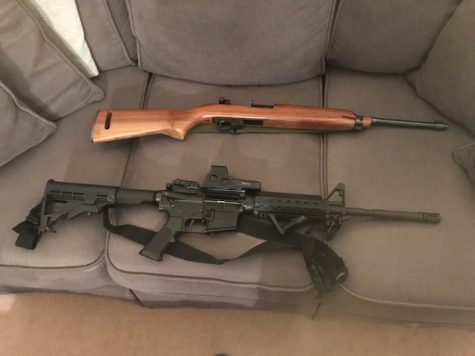
It was easy to assume that the curved grey magazine that was significantly larger was easy to assume that it was the larger magazine given its more intimidating look, when in reality it offered no greater numerical advantage to take a life than the M1’s mundane looking clip.
Political extremism has bred an environmental anger in this discussion. Statistics can and have been interpreted to represent personal and political agendas. Experiences prove different theories to different people. In a climate where safety is a term that is not so easily defined, it all may come down to “to carry, or not to carry.” Every argument regarding firearms and gun violence clashes at gun control.
Riley had a twenty-year career in the New York Police Department, before he continued his expertise as a firearms instructor at Blueline Tactical Supply in Elmsford.
For Riley, the answer is not purely about control.
“Look at the Chicago murder rate, and they have some of the strictest gun laws in the country.”
Riley believes that there is an alternative method. “I, and most police are for regulations for people who want to own a firearm. But banning and restricting guns against legal gun owners is a waste. Drugs are illegal, and yet people still seem to find a way to get them.”
A report in the latter half of 2017 stated that the majority of illegal guns used in violent crime in Chicago were from out of state. The idea that those who intend to bring about violence will find a way to do so, meaning that restricting ownership of guns for the majority of people who legally and responsibly keep them will not solve the issue.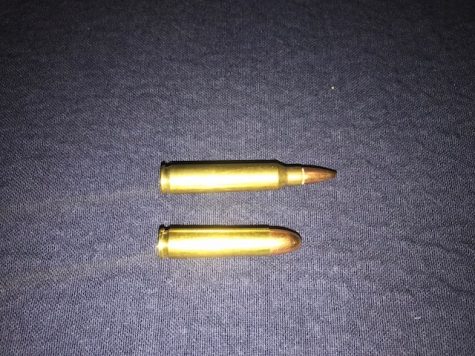
So if gun control will not be sufficient in solving violent shootings, what will? Some have suggested that implementing armed teachers in schools would prevent further school shootings. But for Riley, he feels that this will not work either.
“After the shooting in Florida, everyone went on about arming teachers. I don’t think that is a good idea.”
Riley believes this will prevent teachers from actually helping those they are responsible for, their students.
“Teachers are responsible for their kids, so are you going to have teachers possibly leaving their kids to hunt down an active shooter?”
Riley is also cautious about the validity of armed guards and whether law enforcement actually believes that they would be beneficial or actually harmful. For Riley, it would be difficult to gauge whether everyone would be qualified for the position, in particular, how proficient they are at firearms and how long they have been trained.
“Every individual is different. Some catch on sooner than others. It also comes down to practicing. They have to have the time and money and if you’re doing it wrong, you’re going to continually practice bad habits, while someone who is properly trained will become more efficient.”
For Riley if anyone is to become an armed guard on campuses or schools that person needs to be highly trained, and recommends “retired law enforcement, military, or people with good standing.”
Another action in which Riley believes could become more fruitful is to bridge gaps in mental health awareness, and communication within law agencies. In the case of Parkland, both local law enforcement and the FBI missed crucial signs a tragedy was imminent. For Riley, this is a major issue.
“The local law enforcement did not notify the FBI that Cruz was mentally unstable; he legally purchased those firearms, and went through a background check.”
This was a crucial misstep, because according to Riley, had the data been shared, the purchase would have been denied.
“If the local law enforcement did notify N.B.I.B (National Background Investigations Bureau) and that information was supplied to the database, it would have been flagged and he would have been denied purchase.”
Riley believes that this misstep contributes to the narrative on failed background checks. “People are under the misconception that not everyone gets a background check. For any firearm purchased in a gun store, anywhere in the country, a background check must be performed before release of a firearm.”
Perception, as in most cases, is a major component of the gun rights/control debate. One such area that is continually misinterpreted is the actual definition of what an AR-15 or assault rifle is.
The “AR” is commonly misinterpreted as a pseudonym for assault rifle, or automatic rifle, yet it stands for ArmaLite Rifle, which was the name of the company that produced it in the 1950s. The classification of an actual “assault rifle” is one that is fully automatic, essentially a machine gun, or as described by an article in The Blaze,“Firearms for use by the military are able to shoot continuously with one pull of the trigger, machine-gun style. Civilian firearms, on the other hand, only allow one shot per trigger pull.”
Because many gun manufacturers produce their own version of the ArmaLite, Colt having the patent, the “AR” is more of a style of weapon, not a singular rifle, meaning that a wide variety of culprits are often lumped under one umbrella term of “AR-15.” The term “Military Rifle” is also common when referring to the AR-15, when in reality it simply bears a visual resemblance to its actual military counterpart, the M-16.
The different between what people perceive versus the reality is what makes a productive conversation difficult, says Riley.
“People think of an AR-15 and they think military rifle. They see the features, pistol grip, collapsible stock and they think deadly weapon; they look at an M1 and they see hunting rifle.
The M1, an actual military rifle doesn’t bear the same “militaristic” look as the AR-15, but it carries the effectiveness of a military rifle.
“The AR-15 is a .223 caliber, the same diameter of a .22 caliber, while the M1 is a .30 caliber and leaves a much bigger entry wound.”
Both weapons are semi-automatic, and the M1 becomes vastly deadlier at range. That is the issue that Riley is trying to convey, that perception paints an uneducated picture and that people jump to conclusions without research, as when he placed the two magazine cartridges onto the table side by side.
Knowledge is crucial, he says, and perhaps a step in the direction of arriving at a realistic compromise that both sides can agree to.
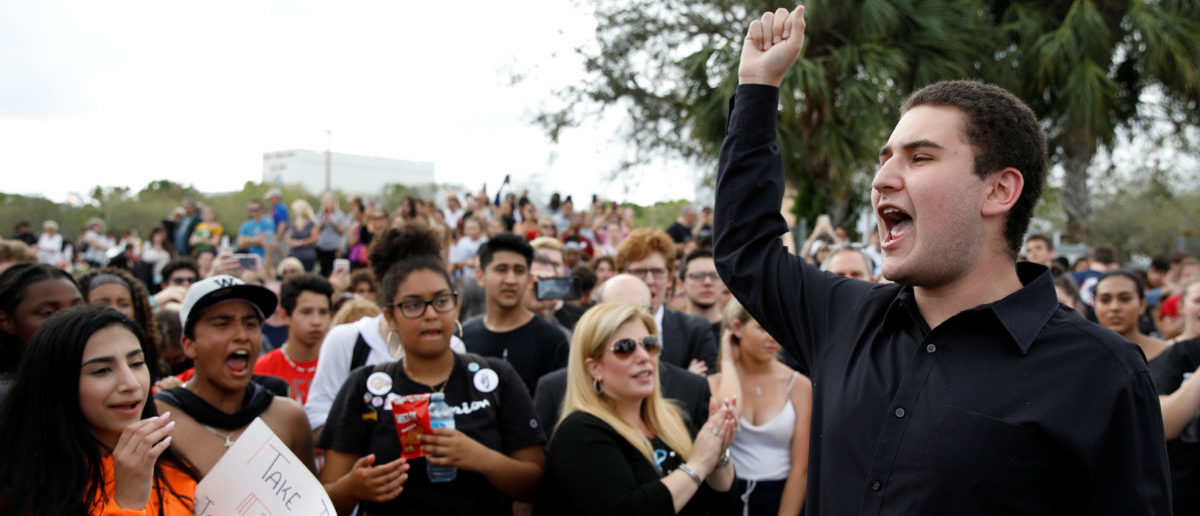
Student Alex Wind from Marjory Stoneman Douglas High School speaks to the crowd during a protest, following a mass shooting in Parkland, Florida, U.S., February 20, 2018. REUTERS/Carlos Garcia Rawlins – RC16D1A24280
What Can Be Done?
In the wake of the school shooting in Parkland that left 17 people dead and another 17 injured, the conversation has since been focused on all that can be done in order to prevent similar incidents from happening in the future. But when will the conversation stop and the action begin?
The New Yorkers Against Gun Violence association has begun the trek in the right direction by taking the problem to the streets. On March 24, the NYAGV partnered with the March for Our Lives movement and called upon the citizens throughout New York to use their voices to force the change that they wish to see.
Since 1993, NYAGV has been vocal in the constant uphill battle for gun safety and gun safety legislation and was partially responsible for the passage of the New York Safe Act in 2013.
While the act was met with opposition almost instantly, its intent has stayed true and improved the state of New York for the better.
“NYAGV remains at the forefront of not only defending the law, but also seeking to strengthen it. New York is now ranked third in the nation in gun safety and it is because of those strong gun laws,” Paul May, Board President of the NYAGV, explained.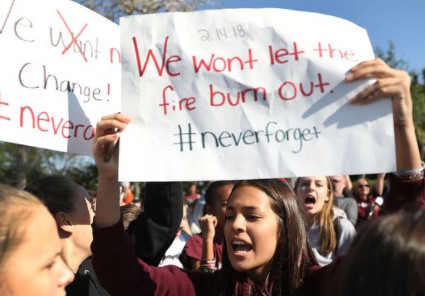
The work of activism groups such as the NYAGV has not gone unnoticed but there is also more to be done, they say. The state of New York is famous for its toughness on gun laws and safety, however that does not stop citizens from other states with weaker gun laws from trafficking weapons in.
May offered one of many solutions to this crisis.
“We should not be forced to allow citizens of other states to bring their concealed weapons into NYS if they cannot or do not meet New York’s standards. This would reduce our handgun laws to the lowest common denominator of other states’ laws.”
Following each of the tragic mass shootings at Columbine, Sandy Hook and Stoneman Douglas High School in Parkland, the NYAGV was forced to reassess their efforts and approach the problem from a different angle. Instead of focusing solely on the mental health and motive of the shooter, they turned to their local government representatives in hopes that the rising number of mass shootings in the United States would motivate them to place stricter sanctions on guns overall. While school shootings are constantly at the forefront of hearts and minds, activists state there is a bigger picture that needs to be considered as well.
On average, 93 Americans die every day at the hands of gun violence, including eight children under the age of 19.
Organizations such as the NRA and other gun rights activists usually point the finger at the mentally ill for being the reason behind mass shootings while critics disagree. If mentally ill parties are involved, they are then times more likely to be the targets of the mass shootings instead of the 4 percent of occurrences where mental health is a major component of the motive.
“The problem is easy access to guns by too many who should never have such access, and until Congress determines to do something significant to address the issue, gun deaths will continue to rise,” May said frankly.
In addition to this, there have been debates about the interpretation of the 2nd Amendment from the founding of the United States until 2008. In 2008, during the case of Washington D.C. v. Heller, the Supreme Court ruled that individuals are legally permitted to own guns. However, the Court also ruled the right was not an unlimited right, that local and state governments had the right to make reasonable laws as well. Because of this ruling, other federal courts were able to uphold state laws such as the NY Safe Act in New York as well as laws in other states such as Connecticut and Maryland.
Students from Stoneman Douglas High School have started a wave of activism that expands far beyond the 31,507 people who reside in Parkland. There have been marches, school walkouts, and constant outpouring of support as the words “Never Again” are chanted over and over again. Students around the country are encouraged to get involved in their local organizations such as NYAGV in the fight for gun control.
In the 2016 Presidential election, only about 40 percent of those under the age of 25 who were registered to vote actually cast ballots, and a much larger percentage of eligible young people did not register to vote.
But starting with the Stoneman Douglas High School students, this may soon change.
“This generation wields the power to change the culture of mass shootings and other gun deaths that victimize them by demanding action, and giving elected officials a reason to finally stop bowing to the gun lobby and instead respond to their constituents who demand sensible gun policies. These young people are determined to succeed and will vote out anyone who stands in their way,” May wrote in a press release.
May lent his opinion about the state of the country currently, saying, “Sometimes it may be hard to believe, but we are a participatory democracy – and we have to stand up and speak out for what we want and what we expect our government to do for us. And the most fundamental obligation of the government is to protect its citizens.

